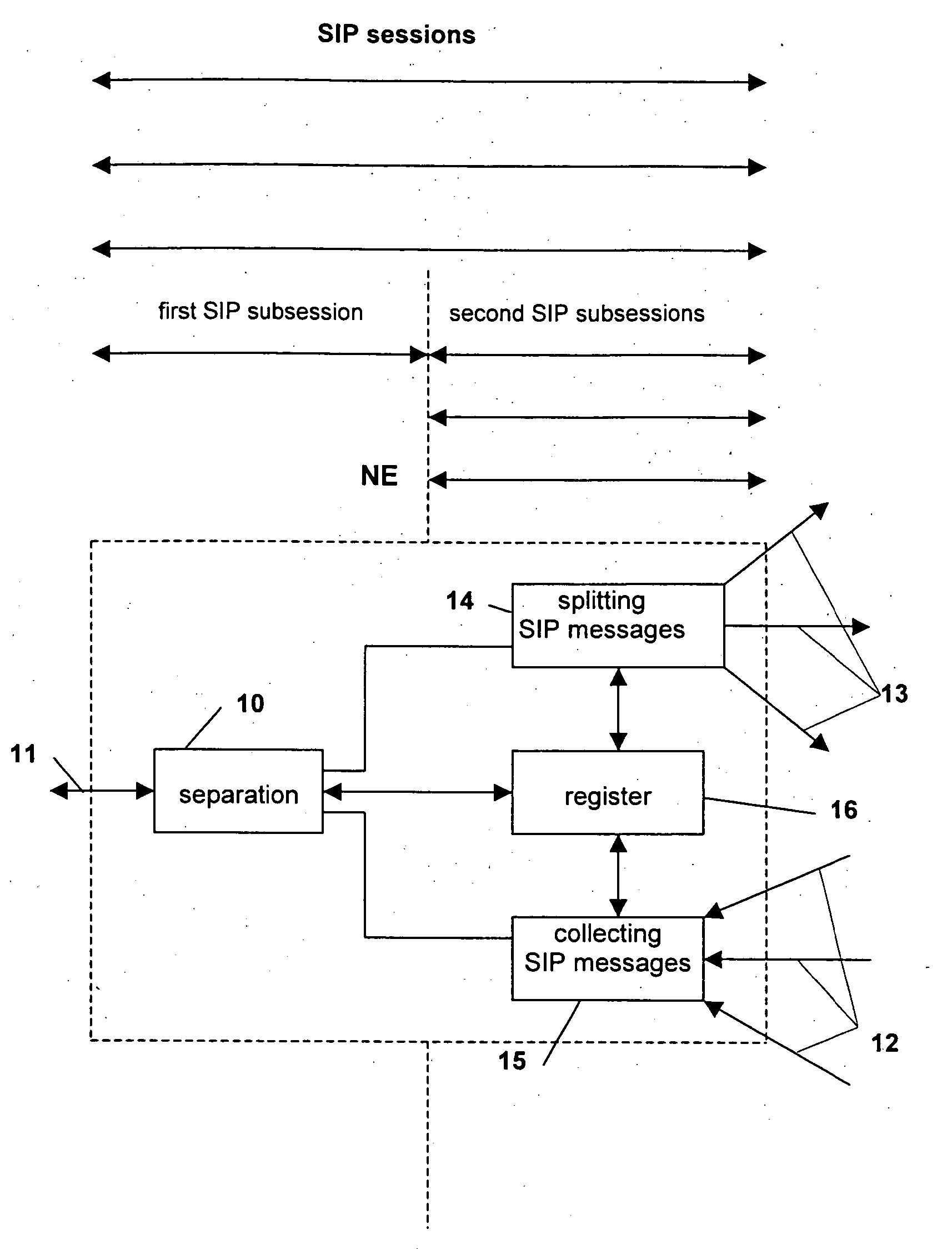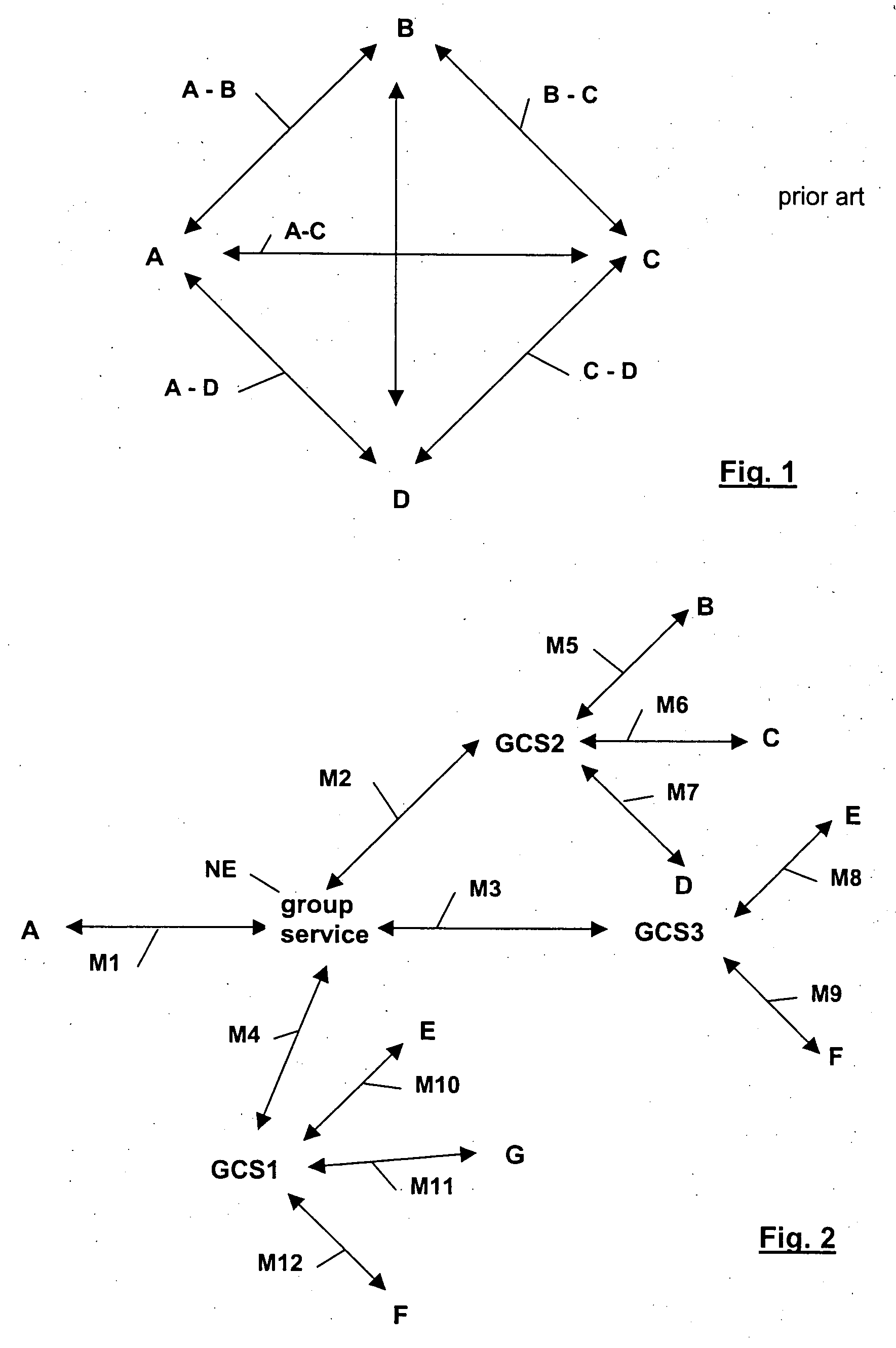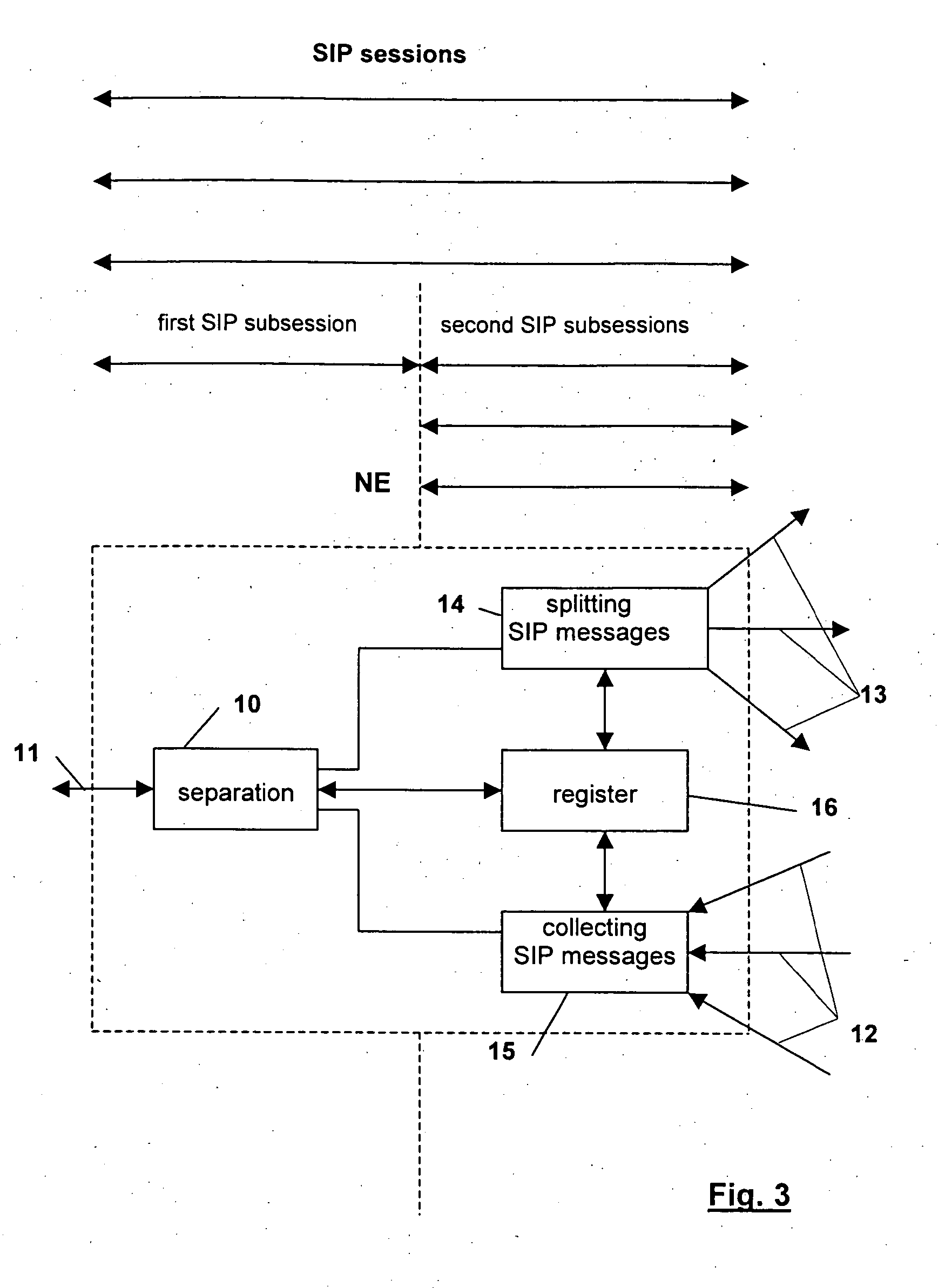Method for managing sessions between network parties, methods, network element and terminal for managing calls
a network party and call management technology, applied in the field of network party and call management, can solve the problems of requiring a certain amount and the amount of session related signalling as to the known sip implementation may be too much, so as to save signalling and session set-up time, network capacity and bandwidth in downlink, and network capacity and bandwidth in uplink.
- Summary
- Abstract
- Description
- Claims
- Application Information
AI Technical Summary
Benefits of technology
Problems solved by technology
Method used
Image
Examples
Embodiment Construction
FIG. 1 shows four terminals A, B, C, D that are participating in a group call. Thereby, terminal A is in a SIP session with terminal B, C and D, respectively. Terminal B is in a SIP session with terminal A, C and D, respectively. Terminal C is in a SIP session with terminal A, B and D, respectively. Correspondingly, terminal D is in a SIP session with terminal A, B and C, respectively.
The respective session relations are indicated in FIG. 1 by double arrows. Double arrow A-B indicates the session between terminals A and B. Double arrow B-C indicates the session between terminals B and C. Double arrow C-D indicates the session between terminals C and D. Double arrow A-D indicates the session between terminals A and D. Double arrow A-C indicates the session between A and C and double arrow B-D indicates the session between terminals B and D.
Thus, each terminal A, B, C, D exchanges SIP messages with each of the other terminals for initiating, maintaining and terminating SIP sessions...
PUM
 Login to View More
Login to View More Abstract
Description
Claims
Application Information
 Login to View More
Login to View More - R&D
- Intellectual Property
- Life Sciences
- Materials
- Tech Scout
- Unparalleled Data Quality
- Higher Quality Content
- 60% Fewer Hallucinations
Browse by: Latest US Patents, China's latest patents, Technical Efficacy Thesaurus, Application Domain, Technology Topic, Popular Technical Reports.
© 2025 PatSnap. All rights reserved.Legal|Privacy policy|Modern Slavery Act Transparency Statement|Sitemap|About US| Contact US: help@patsnap.com



